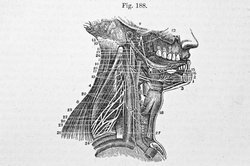How does the act of swallowing work?
The act of swallowing is a complex process of the body. A few things have to work together to make everything work smoothly. Unfortunately, there are also faults here.

The act of swallowing is important for all living beings to be able to ingest food and fluids. This is a very complex process because the body must also ensure that no liquid gets into the lungs. But how exactly does it work?
This is how swallowing works
- The act of swallowing is initially a voluntary activity of the body. It is triggered by irritation of the base of the tongue, for example when saliva is in the mouth is. At the latest, when the act of swallowing has already been prepared and you start to swallow, it turns into an involuntary reaction. You can then no longer stop it.
- In this one process alone, 26 pairs of muscles are involved, which are guided by the swallowing center in the brain stem. There are also 5 pairs of cranial nerves that help.
- Swallowing is divided into 4 phases. The oral preparation phase, the oral transport phase, the pharyngeal transport phase and the esophageal transport phase.
- During the oral preparation phase, the food is first chopped up and the brain receives the information that it is about to swallow something. During the oral transport phase, the muscles begin to work, they push the chyme to the throat and the base of the tongue receives the information that the time has come. As long as the porridge is not too far back in the throat, you can still control the act of swallowing, at the latest, but if it is too far back, you swallow completely automatically.
- During the pharyngeal transport phase, the pulp is already behind the throat. The muscles tense to transport the pulp down, the soft palate tenses so that the pulp does not get into the upper airways, the vocal folds close. The larynx and hyoid bone rise, doubling the airway.
- During the esophageal transport phase, the cardi opens so that the pulp can slide into the stomach. This process would also work in the headstand, so your food will definitely slide into your stomach and not back into your mouth.
The tongue is an extremely diverse sense organ. Apart from the fact that without them ...
Disturbances in the act of swallowing
- There are diseases that can trigger a disorder of the act of swallowing, for example diphtheria or after a stroke. In this case, the individual parts no longer work together safely, which can result in the saliva getting into the lungs due to a lack of closure.
- This problem can sometimes be remedied with speech therapy, and the patient then receives swallowing therapy. Often, however, there is nothing you can do, in which case the saliva has to be suctioned off regularly.
- The big problem is that fluid in the lungs can lead to pneumonia and thus be fatal. This usually happens in people who have had a stroke and who are too late to recognize the problem of swallowing.
How the act of swallowing works is actually very simple. But it is hard to imagine that so many muscles have to work together in sync.
How helpful do you find this article?
The content of the pages of www.helpster.de was created with the greatest care and to the best of our knowledge and belief. However, no guarantee can be given for the correctness and completeness. For this reason, any liability for possible damage in connection with the use of the information offered is excluded. Information and articles must under no circumstances be viewed as a substitute for professional advice and / or treatment by trained and recognized doctors. The content of www.helpster.de cannot and must not be used to make independent diagnoses or to start treatments.

